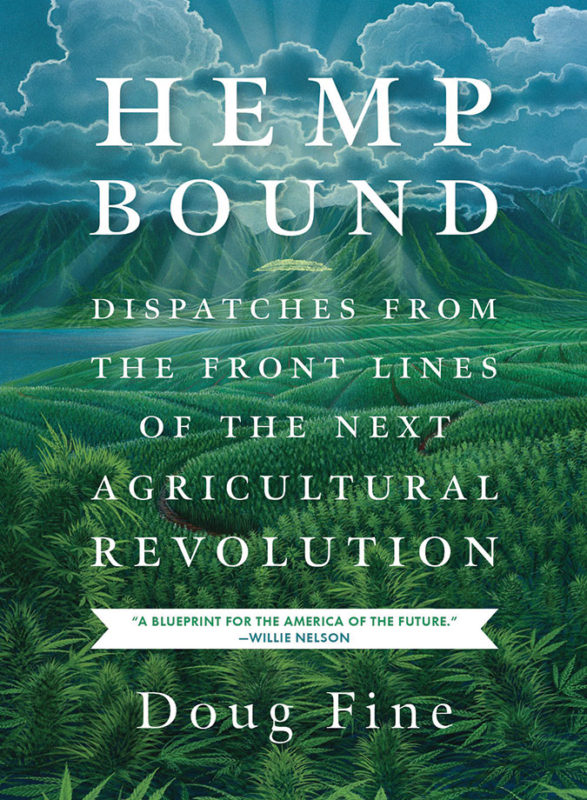The Wonderful World of Hemp
 The Journey
The Journey
Hola, hola Quepolandians and visitors! It has been years since I last wrote for Quepolandia. My articles will still be plant-based, but this time the focus will be specifically on Cannabis sativa L./Hemp and its countless components, uses and benefits, including the ever-so-popular CBD/Cannabidiol.
First, a little of my background to shed some light as to why I feel sufficiently enlightened to be writing on this topic, which I hope will serve to inform and educate you readers on this extraordinary plant. My degree is in Horticulture, and I have been working with plants for over 40 years. Cannabis has been an interest of mine for decades, and I studied and worked with it it in my earlier years. But it was not until I discovered a book entitled Hemp Bound (at the former Jamie Peligro bookstore in Quepos) in 2017 that I realized what Hemp was and its enormous potential to humankind. This book was published in 2014—before we had even heard of CBD. Soon following that enriching read, Smoke Signals—A Social History of Cannabis by Martin Lee was next in queue. By then I was chomping at the bit for more knowledge and ready to return to the states to further my education on this plant and its blossoming, legal industry.
This is a good place to make this distinction: Cannabis includes both Marijuana and Hemp. Hemp is then categorized as either Industrial Hemp—which is grown for its stalk and seed, or Medicinal Hemp—grown mainly for CBD/Cannabidiol extraction. Medicinal Hemp is basically Marijuana with the THC—the psychoactive compound—bred out of it or to levels not to exceed 0.3%, which is the legal limit in the U.S. More on this in future articles.
 Before returning to the U.S., I completed an extensive online Cannabis course and what a revelation it was! All I could think of was that I had been in Costa Rica for too many years and was missing out on all the latest developments and opportunities surrounding this plant.
Before returning to the U.S., I completed an extensive online Cannabis course and what a revelation it was! All I could think of was that I had been in Costa Rica for too many years and was missing out on all the latest developments and opportunities surrounding this plant.
Upon my return to the U.S. in early 2018, I attended a handful of Cannabis conferences and spent some time in Colorado, where I quickly decided that the aspect of the Cannabis industry that I wanted to be involved in was Hemp and not Marijuana. Being more of an entrepreneur, I decided to start my own business—HelloHemp! in Fayetteville, AR. This entailed months of researching CBD & hemp food products and their manufacturers, testing samples and conducting market research. I carefully choose my select product line, created my website and began participating in numerous educational and marketing events throughout the region.
The onset of COVID-19 played a major role in the stifling of my thriving business, but so did the rapid inundation of hundreds upon hundreds of CBD products in a matter of a year’s time. With no FDA product regulations, the unbridled U.S. Hemp/CBD industry went berserk, and still is. Inferior, if not downright pseudo-products were being sold at gas stations, clothing stores, coffee shops, vape stores and everywhere in between. The on-line market was even worse and became a deluge of ridiculous products like CBD sports bras and underwear.
After stumbling upon a video of Costa Rica’s President Alvarado in May 2020 announcing his desire to initiate the Hemp industry to assist with the country’s economic recovery due to COVID-19, my pioneering spirit began tugging at me. I soon knew I was on my way back to Costa Rica, but who knew it would take 7 months to get here. In the meantime, I accepted a job opportunity with a prominent CBD company in Florida.
I estimate that Costa Rica is roughly 5-7 years behind the U.S.’ current efforts to establish and regulate a hemp industry. There is much work to be done here in CR in the research & development department for the cultivation of hemp, the extraction of compounds like CBD and the manufacturing of products. I believe the greatest challenge is in strain/variety development. Outdoor cannabis cultivation—without the use of supplemental lighting—is difficult in countries located close to the equator, due to its year-round, nearly equal daylength and nights. Sufficient vegetative growth requires at least 18 hours of daylight/light before flowering is triggered by the onset of more equal day/night periods, which in northern latitudes occurs naturally around June 21. Some equatorial countries have made advancements in Hemp breeding, but sharing genetics, and their years of research, is unlikely to occur. I am working in cooperation with interested parties here in CR and back in the states to assist in this exciting and challenging endeavor. Whether Costa Rica can succeed in these developments and compete with the global industry, is yet to be seen.
Donna is a Horticulturist and Cannabis advocate and has resided in Costa Rica for 13 years. She recently transplanted her business—HelloHemp!—to Quepos. For more info: hellohempar.com, donnaporter@hellohempar.com or 6007-7779.
